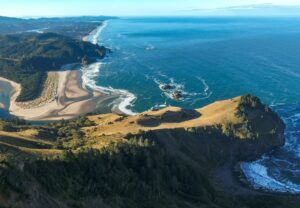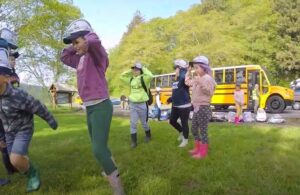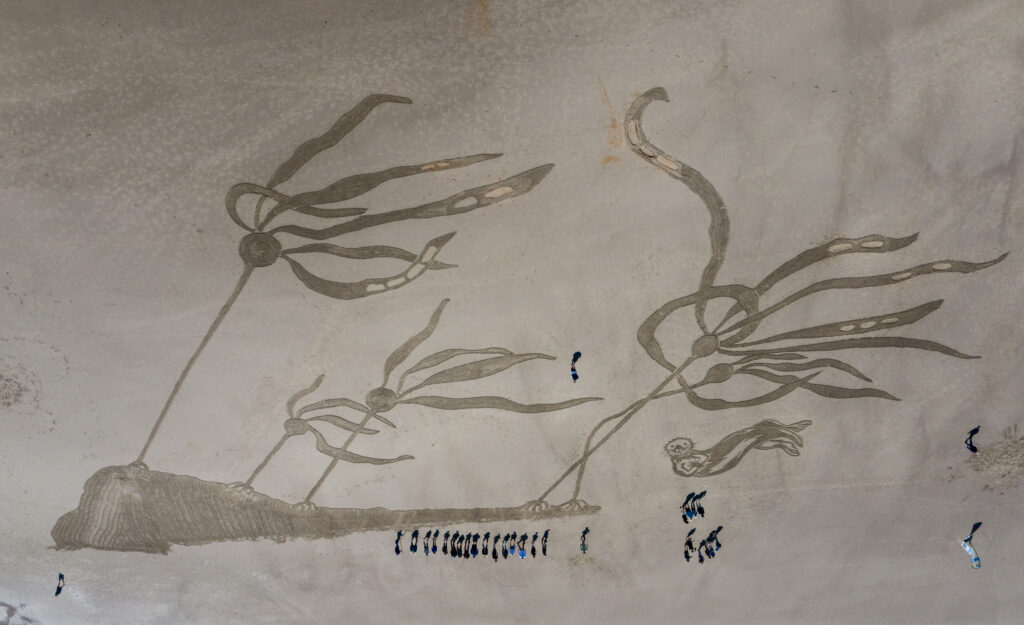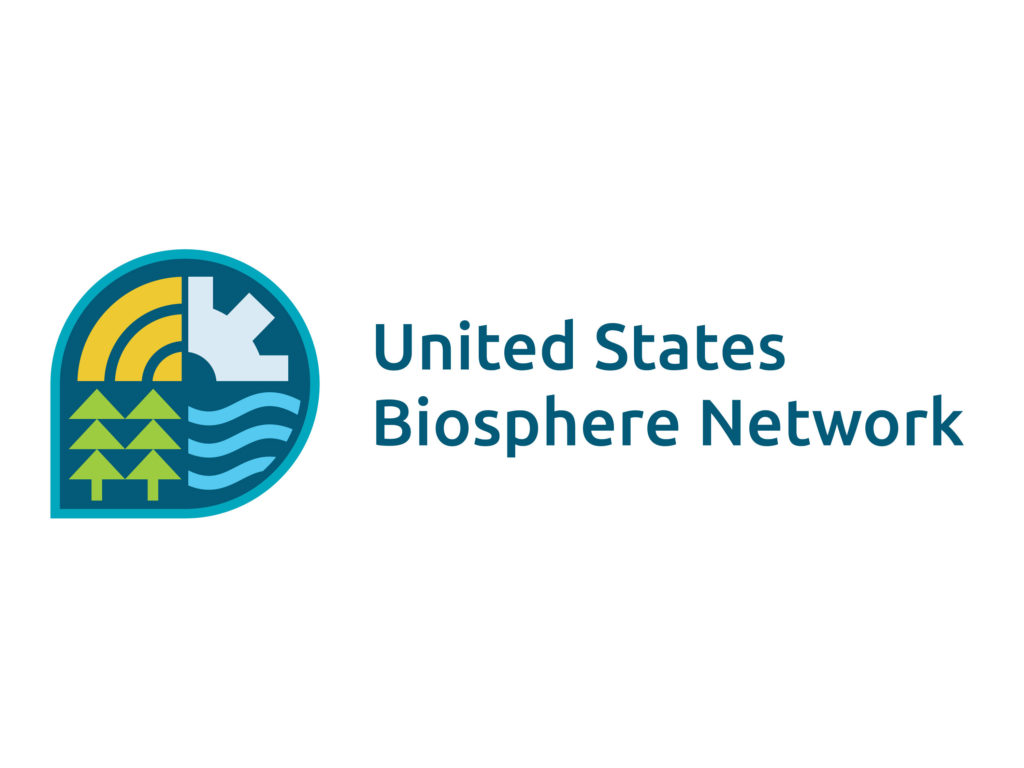
The Cascade Head Biosphere Collaborative is engaged in many efforts across its three pillars: education, climate, and community. On the education front, they are continuing their partnership with NOAA, Lincoln County School District, the Oregon Coast Aquarium, and Camp Westwind on the Salmon River for meaningful watershed educational experiences. Utilizing the Raindrop to Sea video series and the newly constructed Raindrop to Sea trail at Westwind, the Cascade Head Biosphere Collaborative will connect with all of their local 6th-grade classes in May as they trace the path of a raindrop, from precipitation back to the Pacific Ocean with eight learning circles along the way.
This is part of the long-term vision to create a full K-8 set of place-based, environmental educational resources and offerings within the UNESCO site. In 2022, the Collaborative was able to bring 13 classrooms of 3rd and 4th-grade students to experience and gain insights into the Secret Life of Salmon, a science and art-centered field experience, based on the video series of the same name created during the COVID-19 lockdown. All curricula and videos are freely available at CascadeHead.org/education.

The climate research efforts of the Cascade Head Biosphere Collaborative also continue to expand. Through a partnership with the Oregon State University’s Marine Studies Initiative, the US Forest Service, the Oregon Coast Aquarium, The Nature Conservancy, and the Oregon Department of Fish and Wildlife, the Collaborative is researching and developing insights into the impact of temperature on four ecosystems – the Uplands, the Riverine/Estuarine, the Near-Shore, and the Sub-tidal/Oceanic. The research and efforts take many forms. For the uplands, with the deployment of acoustic sensors, the Collaborative is studying bat hibernation, with automated trail cameras they are tracing the bloom patterns of native plants, and with a new meteorological station and 10 sub-stations they are collecting data on temperature and relative humidity, as they track the climatic changes across the landscape.
Down the watershed the Collaborative is studying Green Crab (Carcinus maenas) an invasive crustacean readily expanding its range. Out in the intertidal they are engaged in Sea Star Monitoring, and offshore they are collecting data on any number of species as they wash ashore in the WRACKLINE monitoring project. Collectively, these projects and this greater collaboration are called the 4CAST Project, an acronym for Coastal Climate Change + Community Art, Science & Tradition. Visit 4CASTproject.org to learn more.

With an effort to bring science out from the drawers and desktops of a limited number of researchers, the Cascade Head Biosphere Collaborative is actively involving the community with data collection and data processing. Volunteers are being trained in Sea Star Monitoring, Plant Phenology, and the use of iNaturalist for crowd-sourced environmental research in the WRACKLINE program. To ensure data is compatible with research taking place across the globe and can be shared beyond their biosphere region, Cascade Head Biosphere Collaborative actively participates in collaborative research and shared protocols with organizations such as PISCO (Partnership for Interdisciplinary Studies of Coastal Oceans) and the US National Phenological Network.
Like the pillars of Education and Climate, Community is woven throughout the Collaborative’s work. Within the 4CAST Project, they engage the community in giant sand art projects (see below) as they seek to let “Art Illuminate Science.” In nature printing classes, they take the lives and stories of wild salmon, kelp, and octopus to an audience of unsuspecting would-be artists. Art and Science on Tap mixes lectures with libations as the Collaborative further spreads their vision to connect the beauty of people and place in a new way.
Visit www.cascadehead.org to stay connected and learn more.

Photos by Richard Wright, Future Post Media



